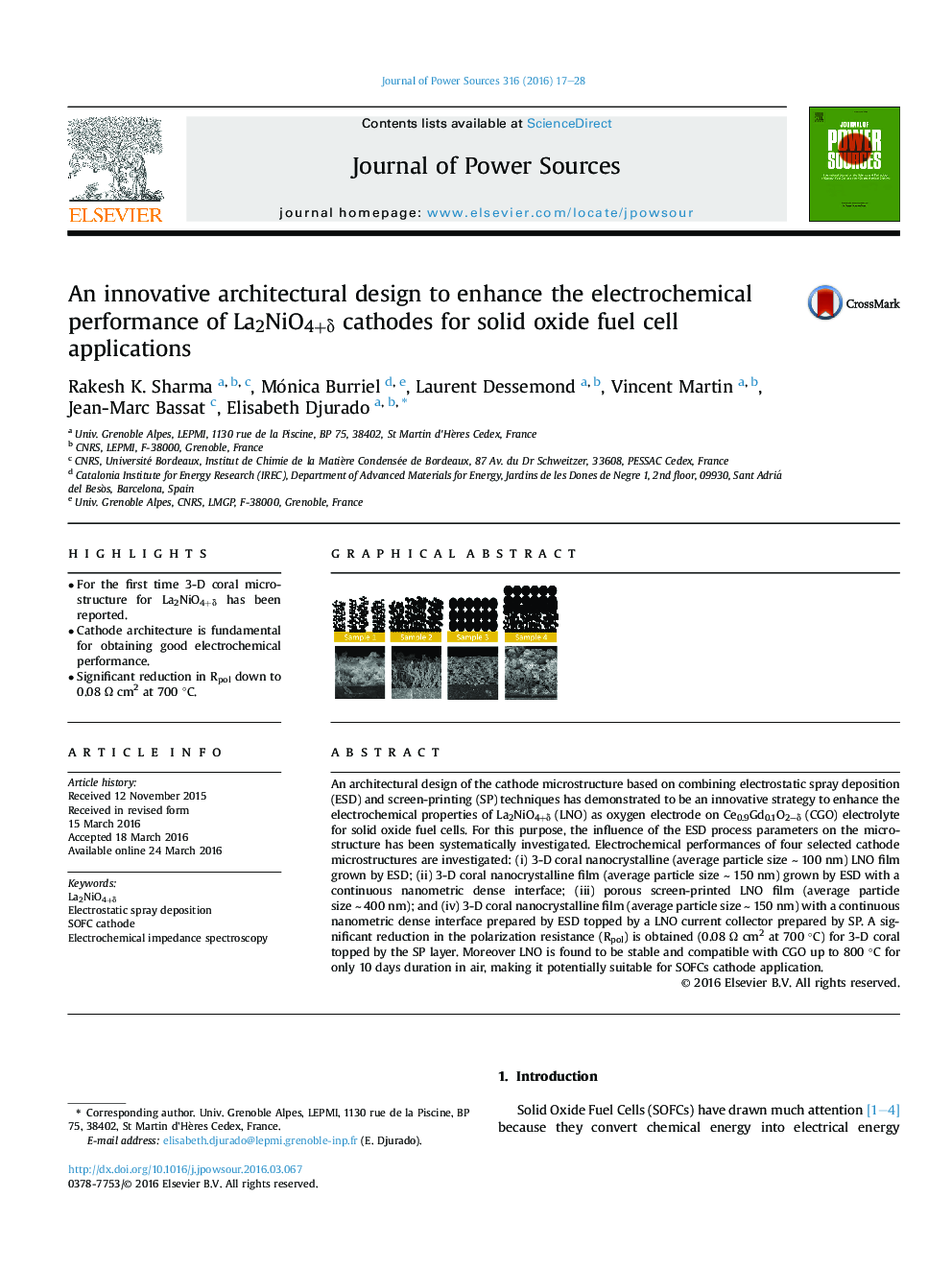| Article ID | Journal | Published Year | Pages | File Type |
|---|---|---|---|---|
| 1292212 | Journal of Power Sources | 2016 | 12 Pages |
•For the first time 3-D coral microstructure for La2NiO4+δ has been reported.•Cathode architecture is fundamental for obtaining good electrochemical performance.•Significant reduction in Rpol down to 0.08 Ω cm2 at 700 °C.
An architectural design of the cathode microstructure based on combining electrostatic spray deposition (ESD) and screen-printing (SP) techniques has demonstrated to be an innovative strategy to enhance the electrochemical properties of La2NiO4+δ (LNO) as oxygen electrode on Ce0.9Gd0.1O2–δ (CGO) electrolyte for solid oxide fuel cells. For this purpose, the influence of the ESD process parameters on the microstructure has been systematically investigated. Electrochemical performances of four selected cathode microstructures are investigated: (i) 3-D coral nanocrystalline (average particle size ∼ 100 nm) LNO film grown by ESD; (ii) 3-D coral nanocrystalline film (average particle size ∼ 150 nm) grown by ESD with a continuous nanometric dense interface; (iii) porous screen-printed LNO film (average particle size ∼ 400 nm); and (iv) 3-D coral nanocrystalline film (average particle size ∼ 150 nm) with a continuous nanometric dense interface prepared by ESD topped by a LNO current collector prepared by SP. A significant reduction in the polarization resistance (Rpol) is obtained (0.08 Ω cm2 at 700 °C) for 3-D coral topped by the SP layer. Moreover LNO is found to be stable and compatible with CGO up to 800 °C for only 10 days duration in air, making it potentially suitable for SOFCs cathode application.
Graphical abstractFigure optionsDownload full-size imageDownload as PowerPoint slide
